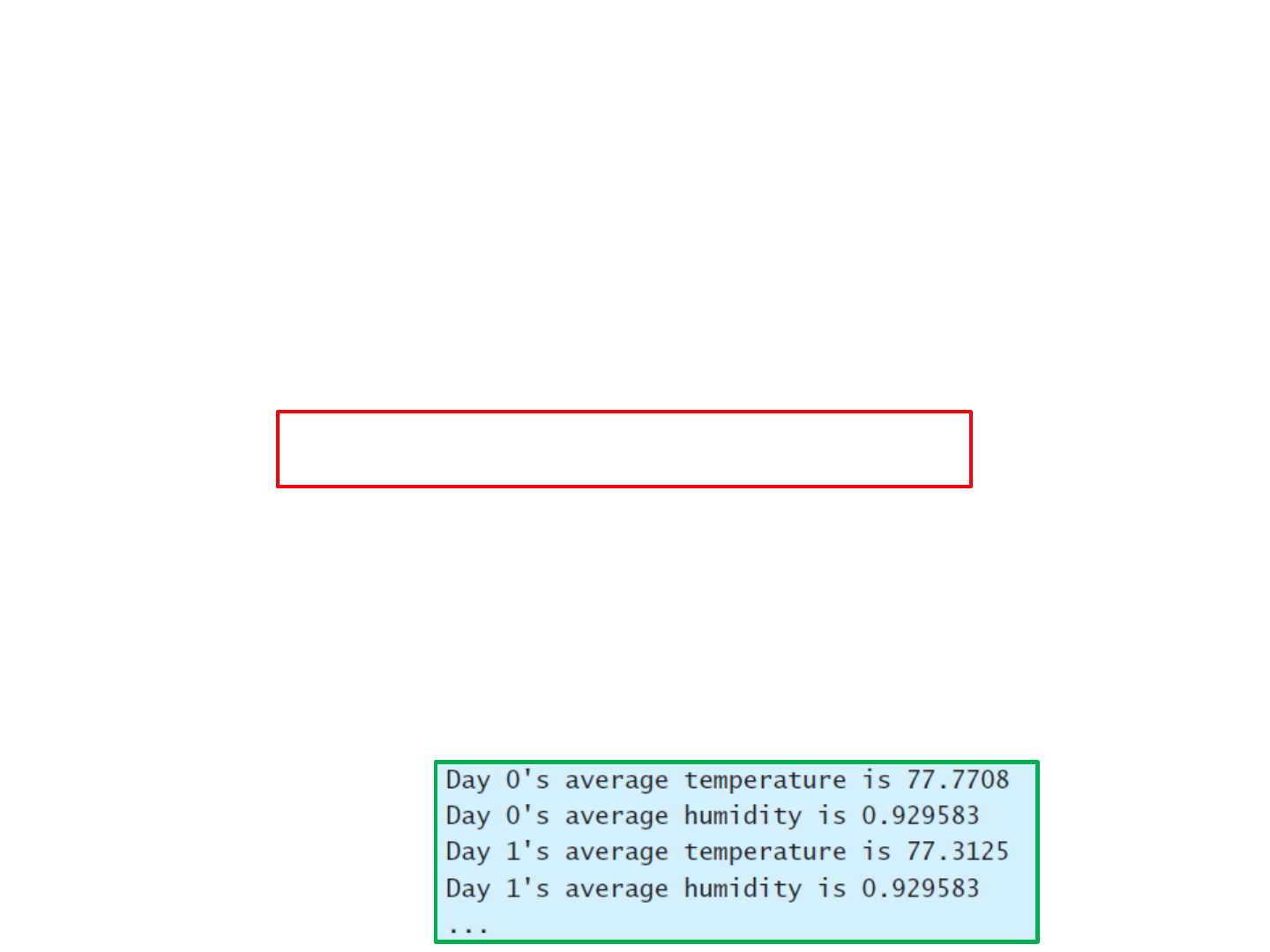
Chapter 8:
Multidimensional
Arrays
Sections 8.18.5, 8.8
1
Textbooks: Y. Daniel Liang, Introduction to Programming with C++, 3rd Edition
© Copyright 2016 by Pearson Education, Inc. All Rights Reserved.
These slides were adapted by Prof. Gheith Abandah from the Computer Engineering Department of the University
of Jordan for the Course: Computer Skills for Engineers (0907101)
Updated by Dr. Ashraf Suyyagh (Spring 2021)

Outline
•
Introduction
•
Declaring Two-Dimensional Arrays
•
Processing Two-Dimensional Arrays
•
Passing Two-Dimensional Arrays to
Functions
•
Problem: Grading a Multiple-Choice
Test
•
Multidimensional Arrays
2

Introduction
Data in a table or a matrix can be
represented using a two-dimensional
array.
3

Outline
•
Introduction
•
Declaring Two-Dimensional Arrays
•
Processing Two-Dimensional Arrays
•
Passing Two-Dimensional Arrays to
Functions
•
Problem: Grading a Multiple-Choice
Test
•
Multidimensional Arrays
4

Declaring Two-
Dimensional Arrays
elementType arrayName[ROW_SIZE]
[COLUMN_SIZE];
•
Example
int distances[7][7];
•
An element in a two-dimensional
array is accessed through a row and
column index.
int bostonToDalas = distances[1][5];
5

Two-Dimensional Array Illustration
6

Outline
•
Introduction
•
Declaring Two-Dimensional Arrays
•
Processing Two-Dimensional Arrays
•
Passing Two-Dimensional Arrays to
Functions
•
Problem: Grading a Multiple-Choice
Test
•
Multidimensional Arrays
7

Initializing Arrays with
Random Values
•
Nested for loops are often used to process a two-
dimensional array.
•
The following loop initializes the array with
random values between 0 and 99:
for (int row = 0; row < rowSize; row++)
{
for (int column = 0; column < columnSize; column++)
{
matrix[row][column] = rand() % 100;
}
}
8

Printing Arrays
•
To print a two-dimensional array, you have to
print each element in the array using a loop like
the following:
for (int row = 0; row < rowSize; row++)
{
for (int column = 0; column < columnSize; column++)
{
cout << matrix[row][column] << " ";
}
cout << endl;
}
9

Summing All Elements
•
To sum all elements of a two-dimensional
array:
int total = 0;
for (int row = 0; row < ROW_SIZE; row++)
{
for (int column = 0; column < COLUMN_SIZE;
column++)
{
total += matrix[row][column];
}
}
10

Summing Elements by Column
•
For each column, use a variable named total
to store its sum. Add each element in the
column to total using a loop like this:
for (int column = 0; column < columnSize;
column++)
{
int total = 0;
for (int row = 0; row < rowSize; row++)
total += matrix[row][column];
cout << "Sum for column " << column << " is “
<< total << endl;
}
11

Which row has the largest
sum?
•
Use variables maxRow and indexOfMaxRow to track the largest
sum and index of the row. For each row, compute its sum and
update maxRow and indexOfMaxRow if the new sum is greater.
int maxRow = 0;
int indexOfMaxRow = 0;
// Get sum of the first row in maxRow
for (int column = 0; column < COLUMN_SIZE; column++)
maxRow += matrix[0][column];
for (int row = 1; row < ROW_SIZE; row++)
{
int totalOfThisRow = 0;
for (int column = 0; column < COLUMN_SIZE; column++)
totalOfThisRow += matrix[row][column];
if (totalOfThisRow > maxRow)
{
maxRow = totalOfThisRow;
indexOfMaxRow = row;
}
}
cout << "Row " << indexOfMaxRow
<< " has the maximum sum of " << maxRow << endl;
12

Outline
•
Introduction
•
Declaring Two-Dimensional Arrays
•
Processing Two-Dimensional Arrays
•
Passing Two-Dimensional Arrays to
Functions
•
Problem: Grading a Multiple-Choice
Test
•
Multidimensional Arrays
13

Passing Two-
Dimensional Arrays to
Functions
•
You can pass a two-dimensional array to a
function.
•
The column size to be speci/ed in the
function declaration.
•
A program that for a function that returns
the sum of all the elements in a matrix.
14
PassTwoDimensionalArray
Run

PassTwoDimensionalArray.
cpp 1/2
#include <iostream>
using namespace std;
const int COLUMN_SIZE = 4;
int sum(const int a[][COLUMN_SIZE], int rowSize)
{
int total = 0;
for (int row = 0; row < rowSize; row++)
{
for (int column = 0; column < COLUMN_SIZE; column+
+)
{
total += a[row][column];
}
}
return total;
}
15

PassTwoDimensionalArray.
cpp 2/2
int main()
{
const int ROW_SIZE = 3;
int m[ROW_SIZE][COLUMN_SIZE];
cout << "Enter " << ROW_SIZE << " rows and "
<< COLUMN_SIZE << " columns: " << endl;
for (int i = 0; i < ROW_SIZE; i++)
for (int j = 0; j < COLUMN_SIZE; j++)
cin >> m[i][j];
cout << "\nSum of all elements is " << sum(m,
ROW_SIZE)
<< endl;
return 0;
}
16

Outline
•
Introduction
•
Declaring Two-Dimensional Arrays
•
Processing Two-Dimensional Arrays
•
Passing Two-Dimensional Arrays to
Functions
•
Problem: Grading a Multiple-Choice
Test
•
Multidimensional Arrays
17

Problem: Grading Multiple-
Choice Test
18
GradeExam
Run

GradeExam.cpp 1/2
#include <iostream>
using namespace std;
int main()
{
const int NUMBER_OF_STUDENTS = 8;
const int NUMBER_OF_QUESTIONS = 10;
// Students' answers to the questions
char answers[NUMBER_OF_STUDENTS][NUMBER_OF_QUESTIONS]
=
{
{'A', 'B', 'A', 'C', 'C', 'D', 'E', 'E', 'A', 'D'},
{'D', 'B', 'A', 'B', 'C', 'A', 'E', 'E', 'A', 'D'},
{'E', 'D', 'D', 'A', 'C', 'B', 'E', 'E', 'A', 'D'},
{'C', 'B', 'A', 'E', 'D', 'C', 'E', 'E', 'A', 'D'},
{'A', 'B', 'D', 'C', 'C', 'D', 'E', 'E', 'A', 'D'},
{'B', 'B', 'E', 'C', 'C', 'D', 'E', 'E', 'A', 'D'},
{'B', 'B', 'A', 'C', 'C', 'D', 'E', 'E', 'A', 'D'},
{'E', 'B', 'E', 'C', 'C', 'D', 'E', 'E', 'A', 'D'}
};
19

GradeExam.cpp 2/2
// Key to the questions
char keys[] = { 'D', 'B', 'D', 'C', 'C', 'D', 'A', 'E', 'A',
'D' };
// Grade all answers
for (int i = 0; i < NUMBER_OF_STUDENTS; i++)
{
// Grade one student
int correctCount = 0;
for (int j = 0; j < NUMBER_OF_QUESTIONS; j++)
{
if (answers[i][j] == keys[j])
correctCount++;
}
cout << "Student " << i << "'s correct count is " <<
correctCount << endl;
}
return 0;
}
20

Outline
•
Introduction
•
Declaring Two-Dimensional Arrays
•
Processing Two-Dimensional Arrays
•
Passing Two-Dimensional Arrays to
Functions
•
Problem: Grading a Multiple-Choice
Test
•
Multidimensional Arrays
21

Multidimensional Arrays
•
A
1D
array is simply one
row of sequential data.
•
A
2D
array is a group of
rows on top of one another
forming a table of rows and
columns.
•
A
3D
array is a group of
tables.
•
A
4D
array is a group of a
group of tables, and so on.
22
Table 1 Table 2 Table 3
Group 1 Group 2 Group 3
Group 4

You can create
n
-dimensional
arrays for any integer
n
.
For example, you may use a three-dimensional array
to store exam scores for a class of 6 students with 5
exams and each exam has 2 parts (multiple-choice
and essay).
double scores[6][5][2];
Multidimensional Arrays
23
ro
w
colum
n
table

You can create
n
-dimensional arrays for any integer
n
.
double scores[6][5][2];
With initialization:
double scores[6][5][2] = {
{{7.5, 20.5}, {9.0, 22.5}, {15, 33.5}, {13, 21.5}, {15, 2.5}},
{{4.5, 21.5}, {9.0, 22.5}, {15, 34.5}, {12, 20.5}, {14, 9.5}},
{{6.5, 30.5}, {9.4, 10.5}, {11, 33.5}, {11, 23.5}, {10, 2.5}},
{{6.5, 23.5}, {9.4, 32.5}, {13, 34.5}, {11, 20.5}, {16, 7.5}},
{{8.5, 26.5}, {9.4, 52.5}, {13, 36.5}, {13, 24.5}, {16, 2.5}},
{{9.5, 20.5}, {9.4, 42.5}, {13, 31.5}, {12, 20.5}, {16, 6.5}} };
Multidimensional Arrays
24
Multiple
Choice
Ess
ay

Weather
Run
Problem: Daily
Temperature and Humidity
•
Suppose a meteorology station records the
temperature and humidity at each hour of every
day and stores the data for the past ten days in a
text /le named weather.txt.
•
Each line of the /le consists of four numbers that
indicates the day, hour, temperature, and
humidity.
25
A program that calculates the
average daily temperature and
humidity for the 10 days.

Weather.cpp 1/2
#include <iostream>
using namespace std;
int main()
{
const int NUMBER_OF_DAYS = 10;
const int NUMBER_OF_HOURS = 24;
double data[NUMBER_OF_DAYS][NUMBER_OF_HOURS][2];
// Read input using input redirection from a file
int day, hour;
double temperature, humidity;
for (int k = 0; k < NUMBER_OF_DAYS * NUMBER_OF_HOURS;
k++)
{
cin >> day >> hour >> temperature >> humidity;
data[day - 1][hour - 1][0] = temperature;
data[day - 1][hour - 1][1] = humidity;
}
26

Weather.cpp 2/2
// Find the average daily temperature and humidity
for (int i = 0; i < NUMBER_OF_DAYS; i++)
{
double dailyTemperatureTotal = 0, dailyHumidityTotal
= 0;
for (int j = 0; j < NUMBER_OF_HOURS; j++)
{
dailyTemperatureTotal += data[i][j][0];
dailyHumidityTotal += data[i][j][1];
}
// Display result
cout << "Day " << i << "'s average temperature is "
<< dailyTemperatureTotal / NUMBER_OF_HOURS <<
endl;
cout << "Day " << i << "'s average humidity is "
<< dailyHumidityTotal / NUMBER_OF_HOURS << endl;
}
return 0;
}
27

Outline
•
Introduction
•
Declaring Two-Dimensional Arrays
•
Processing Two-Dimensional Arrays
•
Passing Two-Dimensional Arrays to
Functions
•
Problem: Grading a Multiple-Choice
Test
•
Multidimensional Arrays
28
